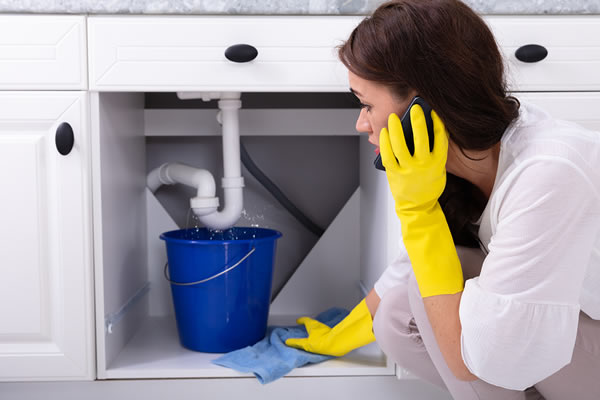Presented here in the next paragraph you will discover some first-rate information related to Top leak detection hacks.

Early discovery of dripping water lines can alleviate a potential calamity. Some small water leakages may not be noticeable.
1. Take A Look At the Water Meter
Every house has a water meter. Examining it is a surefire manner in which helps you find leakages. For starters, switch off all the water sources. Make sure no one will flush, make use of the faucet, shower, run the cleaning device or dish washer. From there, go to the meter and watch if it will transform. Because no person is using it, there need to be no activities. That shows a fast-moving leak if it moves. If you find no changes, wait a hr or 2 and inspect back once again. This indicates you might have a sluggish leakage that could even be underground.
2. Check Water Consumption
Evaluate your water costs and track your water intake. As the one paying it, you should see if there are any kind of inconsistencies. If you find sudden changes, in spite of your intake coinciding, it suggests that you have leakages in your plumbing system. Bear in mind, your water costs ought to fall under the same range monthly. A sudden spike in your bill indicates a fast-moving leakage.
On the other hand, a consistent boost monthly, even with the very same behaviors, shows you have a slow leakage that's likewise slowly escalating. Call a plumber to completely check your residential property, especially if you feel a warm area on your flooring with piping below.
3. Do a Food Coloring Examination
30% comes from bathrooms when it comes to water usage. Test to see if they are running correctly. Drop specks of food color in the container and wait 10 mins. If the color in some way infiltrates your dish throughout that time without flushing, there's a leak in between the container and dish.
4. Asses Exterior Lines
Do not forget to examine your outdoor water lines as well. Examination faucets by attaching a yard hose. Ought to water permeate out of the connection, you have a loose rubber gasket. Change this as well as make certain all connections are tight. If you have actually obtained a lawn sprinkler, it will certainly help get it skillfully checked out and preserved each year. One little leakage can waste tons of water as well as surge your water costs.
5. Analyze the circumstance and also inspect
House owners need to make it a habit to check under the sink counters as well as also inside cupboards for any type of bad odor or mold growth. These two red flags indicate a leak so timely attention is called for. Doing routine evaluations, even bi-annually, can conserve you from a significant trouble.
Much more notably, if you know your home is currently old, keep a watchful eye on your heating units, pipes, pipes etc. Check for discolorations as well as deteriorating as the majority of appliances as well as pipes have a life span. They will also normally deteriorate due to tear as well as use. Don't wait for it to escalate if you think dripping water lines in your plumbing system. Call a specialist plumber immediately so you do not end up with a horrible mess in your house.
Early detection of leaking water lines can minimize a possible catastrophe. Some small water leakages may not be noticeable. Inspecting it is a surefire method that assists you uncover leakages. One little leak can squander tons of water and also spike your water bill.
If you suspect dripping water lines in your plumbing system, do not wait for it to escalate.
WARNING SIGNS OF WATER LEAKAGE BEHIND THE WALL
PERSISTENT MUSTY ODORS
As water slowly drips from a leaky pipe inside the wall, flooring and sheetrock stay damp and develop an odor similar to wet cardboard. It generates a musty smell that can help you find hidden leaks.
MOLD IN UNUSUAL AREAS
Mold usually grows in wet areas like kitchens, baths and laundry rooms. If you spot the stuff on walls or baseboards in other rooms of the house, it’s a good indicator of undetected water leaks.
STAINS THAT GROW
When mold thrives around a leaky pipe, it sometimes takes hold on the inside surface of the affected wall. A growing stain on otherwise clean sheetrock is often your sign of a hidden plumbing problem.
PEELING OR BUBBLING WALLPAPER / PAINT
This clue is easy to miss in rooms that don’t get much use. When you see wallpaper separating along seams or paint bubbling or flaking off the wall, blame sheetrock that stays wet because of an undetected leak.
BUCKLED CEILINGS AND STAINED FLOORS
If ceilings or floors in bathrooms, kitchens or laundry areas develop structural problems, don’t rule out constant damp inside the walls. Wet sheetrock can affect adjacent framing, flooring and ceilings.
https://www.servicemasterbyzaba.com/blog/how-to-detect-water-leakage-in-walls/

I came across that write up about Hacks to detect leaks when doing a search on the web. Do you know about someone else who is curious about Top leak detection hacks? Take a moment to share it. Thank you for your time spent reading it.
Comments on “Guide To Water Leakage Discovery In Your Home”